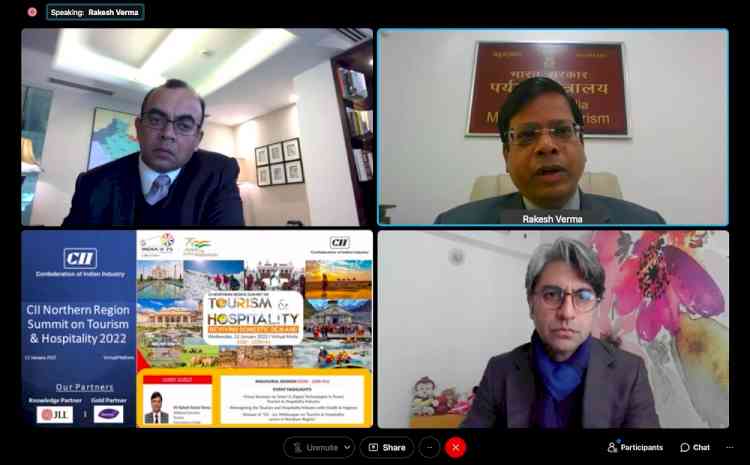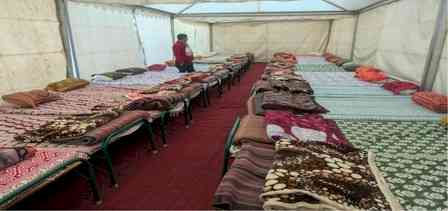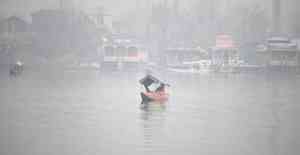Tourism and Hospitality sectors in North India witnessed strong recovery post second Covid wave: CII-JLL Tourism Report 2022
Domestic demand has been the key driver for recovery

Ludhiana, January 12, 2022: The tourism industry in India is currently facing one of its worst crisis in history with the impact of the COVID-19 pandemic. While domestic statistics during the pandemic period have not yet been released, FTAs (Foreign Tourist Arrivals) saw a 75% decline in 2020. However, the Northern parts of the country comprising of ten states and union territories - Jammu & Kashmir, Himachal Pradesh, Punjab, Uttarakhand, Haryana, Delhi, Rajasthan, Uttar Pradesh, Ladakh, and Chandigarh, have been able to do well. India’s massive domestic demand base helped sustain the tourism sector with a rise in special interest tourism such as spiritual tourism, adventure tourism, snow tourism, and so on according to a CII- JLL report titled “Tourism in North India - A Closer Look,” released today at the CII Northern Region Summit on Tourism & Hospitality 2022 - “Reviving domestic demand”.
Spread across an array of geographical features, the north Indian region constitutes a mix of states and union territories including Ladakh, Jammu & Kashmir, Himachal Pradesh, Uttarakhand, Punjab, Chandigarh, Delhi, Haryana, Rajasthan, and Uttar Pradesh, and. Collectively, this region includes some of India’s most popular tourist destinations, landmarks of religious and historic significance and is a melting pot of various cultures. Contrary to common perceptions of a tropical country, this belt experiences a temperate climate which further adds to its appeal to foreign and domestic tourists alike. A great sample set for the varying terrains of India, the region also boasts of great geographical and natural diversity with national capital and major megacity, Delhi, at the heart of this region.
Over the last decade, tourism in India has grown consistently and steadily. Under the shadow of the pandemic over the last two years, a stronger domestic market has emerged with more and more people looking to capitalize on travel opportunities with a renewed appreciation for the outdoors. Towards the end of the second wave, the Indian travel industry began witnessing an overall improvement in key performance indicators, says the report.
The recovery of the North Indian tourism sector can be evinced by the growth in occupancy levels across hotels in all states. The hospitality sector in most leisure locations in India witnessed a faster bounce back post the second wave in comparison to the first wave. This was primarily due to the easing of travel restrictions and improved traveler confidence due to rapidly growing vaccination numbers. Hospitality sectors in most North Indian states have been driven by domestic leisure travel over the past two years and witnessed significant growth in 2021 in comparison to 2020. Business destinations such as Delhi and Chandigarh have also witnessed a significant growth in occupancy and RevPAR indicators.
Thanking CII for the initiative, Mr Rakesh Verma, Additional Secretary, Tourism, Government of India further stressed on the importance of domestic tourism and said, “Today, our biggest challenge is to accelerate the recovery of the Indian tourism sector. This can be made possible by giving a thrust to the resilient Indian domestic Tourism and Hospitality Industry which holds the potential to blossom into a huge market. This requires a strong collaboration and engagement of the Industry with the State Governments. The Ministry of Tourism, too, is working on various areas for the recovery of the sector, which includes fiscal and regulatory relief measures, confidence building measures for travellers, digitalisation of tourism sector, and ensuring health and safety protocols. The Ministry will also be adopting a new Tourism Policy soon, post pandemic, to further strengthen the sector.”
Emphasising on the revival of domestic demand in tourism, Mr Zubin Saxena, Co-Chair, CII Northern Regional Committee on Tourism & Hospitality and Managing Director & VP, Radisson Hotel Group Managing Director said, “Tourism in India has significant potential considering the rich cultural and historical heritage, variety in ecology, terrains and places of natural beauty spread across the Northern Region. India needs to stimulate its domestic demand by ways of promoting domestic tourist destinations through proper outreach by way of advertisements and leveraging social media along with providing safe and hygienic options that will ensure a greater footfall of tourists. We need to make collaborative efforts with all stakeholders including the Government of India, state boards, and various ministries for the on-ground implementation of a domestic tourism policy which rolls out confidence-building measures and encourages the best of smart and digital technologies.”
“Development and improvements in infrastructure such as new highways and airports have been the biggest help that the government has provided to the tourism industry. The fillip in infrastructure will provide long-lasting benefits to the travel trade. States such as Uttarakhand stand to gain with improved road network and J&K and Ladakh are set to gain due to improved flight connections. With Jewar Airport now becoming a reality soon, both Uttar Pradesh and Delhi are set to witness increased foreign and domestic footfalls once normalcy returns,” said Mr Jaideep Dang, Managing Director, Hotels and Hospitality Group, South Asia, JLL.
“Covid-19 has also proved to be an unexpected catalyst for digitalization and the integration of new technologies. The adoption of digital solutions may be challenging, particularly for remote locations, which in turn, may hamper efforts to attract visitors there as compared to more mature destinations. It will be important for governments to invest in the digital infrastructure of emerging destinations and remote areas, as well as to enhance digital skills within local communities,” he added.
Looking ahead
The government has taken actions to mitigate the impact of COVID-19 on the tourism sector including easing travel restrictions, supporting the sector with fiscal and liquidity measures, introducing health protocols, promoting domestic tourism, and investing in and encouraging innovation and digitalization. Once again, enhanced coordination between governments as well as alignment between the public and private sector will be the key to further growth. The significance of public-private partnerships to improve tourism infrastructure and tackle the problem of poor connectivity should be further addressed.
For hospitality industry, the need of the hour is to enhance sources of working capital, manage fixed costs, payroll support, and provide liquidity relief. As the tourism sector adapts to the new normal, the government could consider policies incentivizing travel including individual and MICE travel. Tax subsidies or short term tax holidays may be provided to improve financial health of travel businesses.
Furthermore, transparency in communications will become even more important, with consumers increasingly looking for detailed, reliable information to plan their travel. Destination and marketing communications must be planned in line with this. Health and safety have become increasingly important, and stakeholders must work together to establish and share best practices.
Although the recovery of tourism has started domestically and regionally, it is essential to re-open international travel gradually to ensure the sector’s recovery in a fuller manner. The importance of the tourism sector as a driver of job creation and growth must be kept in mind. The sector’s recovery will be dependent on all its key stakeholders, from governments, the private sector, local communities, and even travelers proactively coming together to support growth.


 cityairnews
cityairnews 








